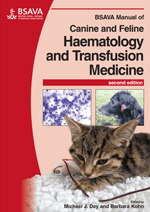
Full text loading...

Canine transfusion medicine practices have been growing rapidly over the past few decades, reflecting knowledge and practices in human transfusion medicine, as well as the advancing capabilities of general practitioners and referral hospitals in managing critically ill patients and emergency situations. This chapter considers canine blood donors; blood groups and typing; cross-matching; blood collection systems; blood donation; blood product preparation and storage; indications for transfusion; administration of blood products; transfusion reactions; autologous transfusion.
Canine transfusion medicine, Page 1 of 1
< Previous page | Next page > /docserver/preview/fulltext/10.22233/9781905319732/9781905319732.34-1.gif

Full text loading...










